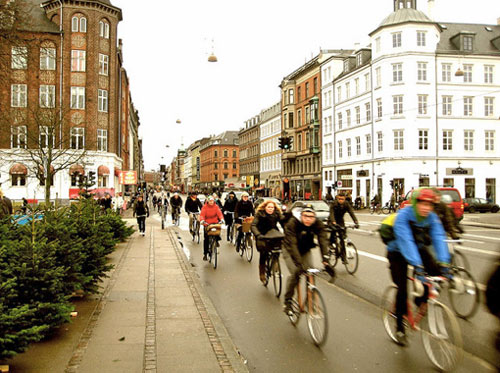
Large copenhagen cycle lane on Norrebrogade – A road closed to private motor vehicles. Photo: Sir Pecan Gum
A cycle path well used. Not just a strip of paint, but separated from the road. It is said 35,000 cyclists daily use the Nørrebrogade in Copenhagen
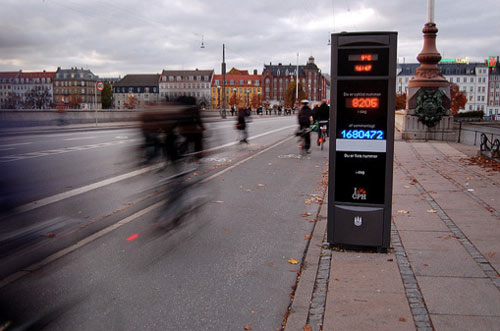
Copenhagen Super Highway by Sir Pecan Gum
Copenhagen’s Super highway.
The Birth of Copenhagen as a Cycling City
Video about Copenhagen’s decision to pedestrians large parts of the city centre in 1962. The interviewer talks how there was fervoured debate at the time. When the radical proposals were suggested, many argued that:
- It wouldn’t work
- Local shops would go out of business
- The weather was too wet and cold for outdoor life.
But, despite the arguments, the bold decision was taken – leading to the use of public space in Copenhagen being very different to other major European cities.
The video is very interesting and really emphasises the point that sometimes the best practise is to start from scratch, rather than cosmetically paint over existing infrastructure.
I can understand the political reluctance to ban private motor cars from even small parts of city centres. But, it’s a shame because if we had a bit of vision we could also transform cities into more liveable, health and enjoyable places.
Copenhagen ranks 10th of list of ‘liveable cities‘ London is 38th.
Photos of Copenhagen Cycling
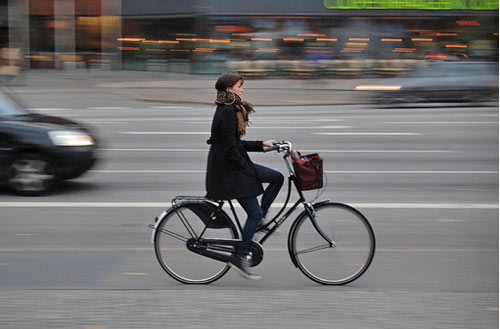
Time to cycle in style. Photo: Sir Pecan Gum
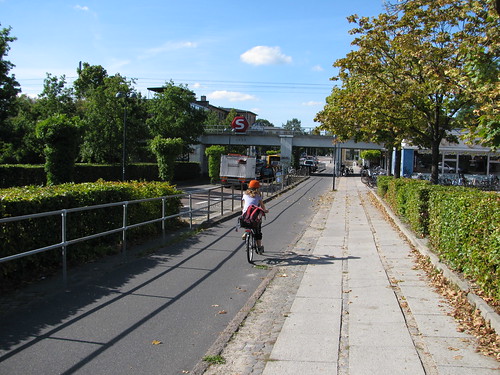
Copenhagen bicycle path under S-tog viaduct by Daniel Sparing
Copenhagen blue cycle path by Daniel Sparing
Note: filter for cyclists to get to front of lights. Photo Daniel Sparing
Bus lanes, cycle lanes and pavement. – you won’t find cyclists using pavement here. Photo Daniel Sparing
Avoiding buses – joy. Though I guess you have to watch out for pedestrians leaving bus. Photo Daniel Sparing
40Km (25mph) speed limits – big difference to 30mph. Photo Daniel Sparing
Masses of cyclists.
by Mikael Colville-Andersen Copenhagen
Nice red boots, no red lights
by Mikael Colville-Andersen Copenhagen. The freedom of cycling.

a long history of cycling in Copenhagen. Couples celebrate something in the black and white era. Photo: Royal Library of Denmark.
Copenhagen Cycle Parade 2010 by tulenheimo
Copenhagen Cycle Parade 2010 by tulenheimo,
Related


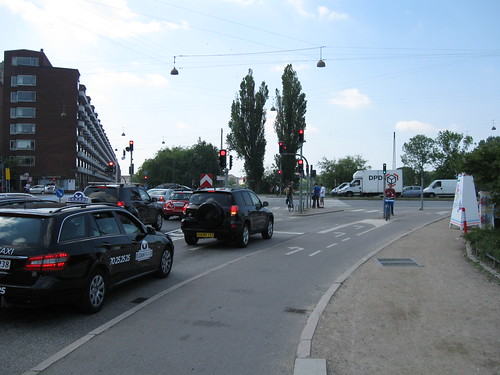
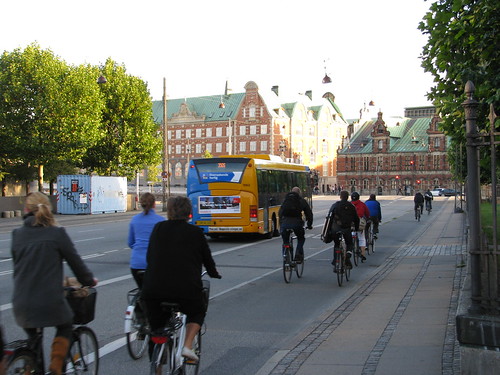
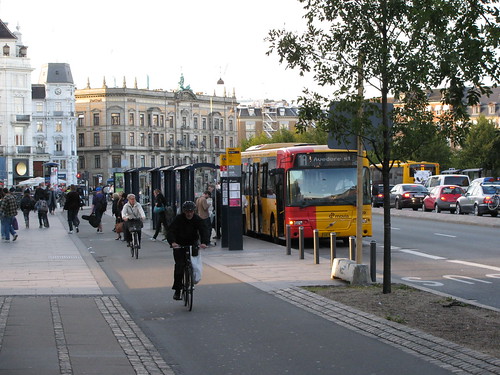

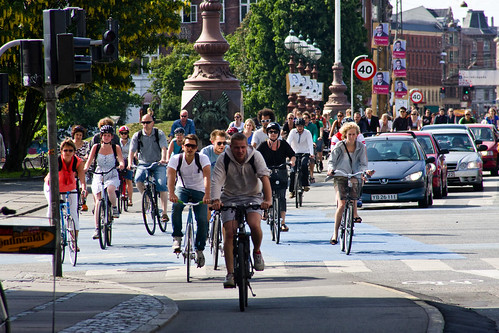

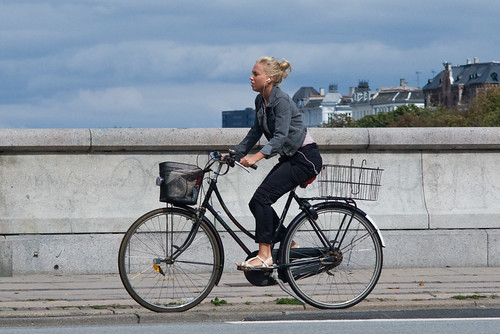
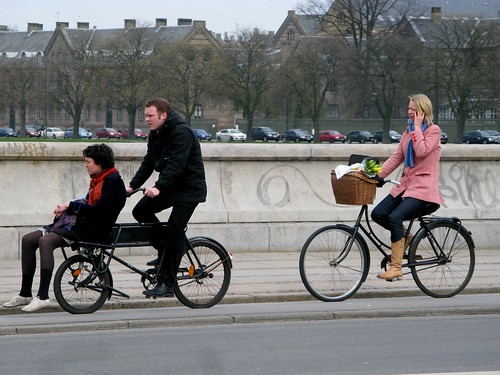

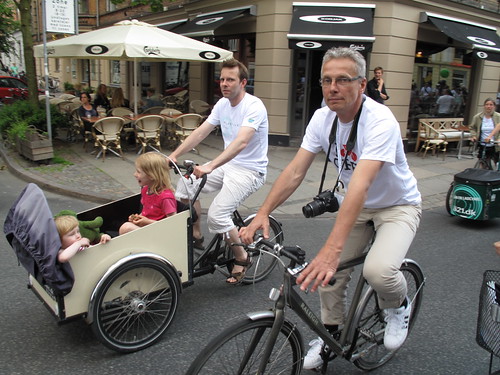
You often seem to hear that infrastructure changes can’t happen in London because:
a) They are too expensive.
b) There isn’t enough room.
And yet, in the recently we’ve seen a complete system of Olympic lanes spring up almost overnight, including new signage and road markings, and despite complaints from some motorists.
If the room and the money exists for those, despite them only being required for a few weeks, the only conclusion can be that infrastructure changes don’t happen because:
c) There isn’t the political will, despite the kind of obvious benefits shown in a blog post like this.